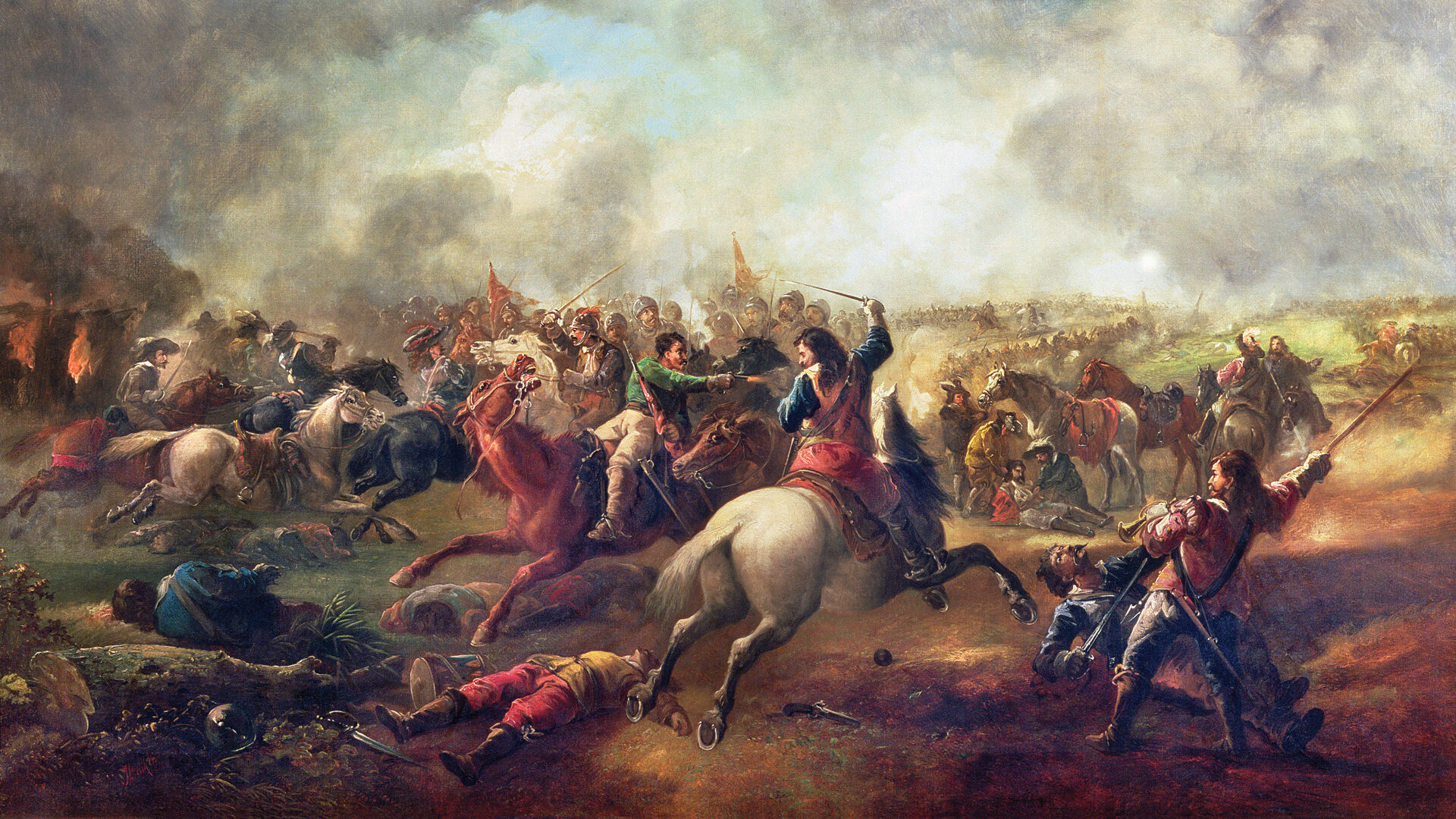The English Civil War
The Baroque Period
Sir Anthony van Dyck, Royal Collection, Public domain, via Wikimedia Commons
In 1215, a group of English noblemen had rebelled against King John. The conflict was resolved when the Archbishop of Canterbury drafted the Magna Carta, which placed certain restrictions on the king's power and guaranteed certain rights for the nobles. One of the most important of these rights was that the king could not levy a tax without the consent of a "Parliament," or gathering of nobles who represented the country.
King Charles I, who came to the throne in 1625, did not have a wonderful relationship with his parliaments. Meetings between the monarch and parliament were contentious and often deadlocked. To avoid this conflict, from 1629 until 1640, Charles simply never called a parliament. As a result, any taxes he levied during this period were technically illegal. Charles worked around this in various ways, mostly through increased fines, levies, and sometimes digging up old medieval laws to scrape additional funding together.
Although this made him unpopular, far worse was his image as a Catholic sympathizer. He married the Catholic princess Henrietta Maria and failed to support the Protestant countries in the Thirty Years' War. Worst of all, he was a promoter of "high church" Anglicanism, which is outwardly very similar to Catholicism. Charles attempted to subject the Church of Scotland to English bishops. He required the use of the Book of Common Prayer. High church music by the likes of Thomas Tallis and William Byrd, was promoted. All of this infuriated the Puritans, a very powerful anti-Catholic faction among English and Scottish Protestants, who preferred plain, simple music in their worship, if there was any at all. A good example of this is the 1640 Bay Psalm Book, the first book published in England's new Massachussetts Bay Colony, which had been settled by another group of Puritans. Charles' attempt to change their ways led the Bishops' Wars between England and Scotland.

John Barker (1811-1886), Public domain, via Wikimedia Commons
At the end of the Bishops' Wars, Charles was out of money and finally had to call a Parliament, which immediately started making all kinds of demands. Eventually, both the king and Parliament raised separate armies, officially to deal with rebellions in Scotland and Ireland, but they just started fighting each other. Over the next nine years, England divided into "Roundheads," who supported Parliament, and "Cavaliers," who supported the king. Eventually, however, Charles was defeated by Scottish forces, handed over to Parliament, and executed for treason in 1649. His son (also named Charles) fled to Europe.
Parliament then proclaimed a republic called the Commonwealth of England. Four years later, in 1653, the Commonwealth was reorganized under a member of Parliament named Oliver Cromwell, who adopted the title "Lord Protector." Although the "Protectorate" was legally a republic, for all intents and purposes, Cromwell was a military dictator. Under Cromwell, Puritans attempted to eradicate any vestiges of Catholic culture in England, going so far as to destroy the pipe organs at cathedrals in Chichester, Canterbury, Norwich, and Winchester, calling them "inventions of Satan." The celebration of Christmas was also outlawed as unbiblical.
The Protectorate collapsed into internal strife after Cromwell's death and in 1660, Charles II returned to England and restored the monarchy. He ordered all official documents dated to indicate that he had become king immediately upon his father's death in 1649, and also had Oliver Cromwell (who had now been dead for three years) exhumed, put on trial, convicted of treason, hanged, drawn, and quartered. His head was put on a pike outside of London until a storm blew it away some time later.
